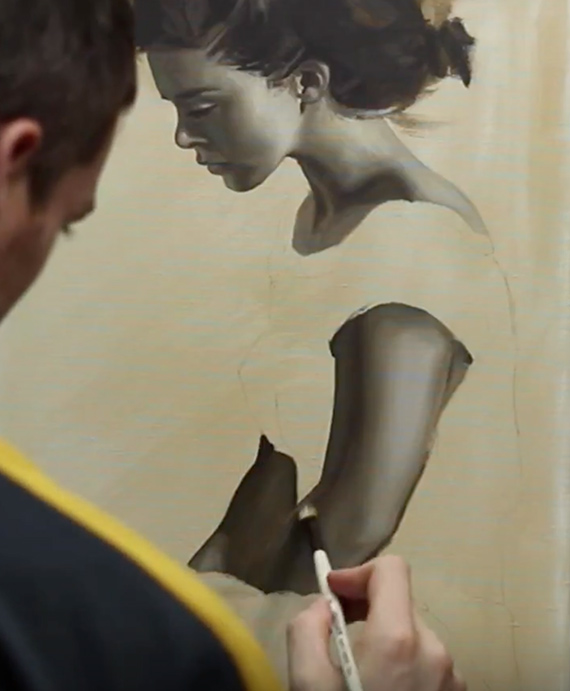Ever wonder if the grass is truly greener on the other side? Vinny Le Pes, an artistic jack-of-all-trades and the host of the Youtube series Creative Crossovers, has some insight to share on the matter. As he explains, the world of painting and the world of photography have a different set of challenges to overcome and a different set of techniques to master. However, each discipline has something to offer the other:
Believe it or not, thinking more like a painter can actually be beneficial to honing one’s skills as a photographer. Here are just a few tips and tricks from the world of painting, reimagined to assist photographers of all sorts.
Make Studies
Painters don’t just dive into a large complicated piece blindly. Instead, they create loose sketches to test composition, try out colors, and practice different techniques. This makes perfect sense. After all, why spend weeks on a piece and find out the hard way that something isn’t quite perfect?
Some photographers do create sketch images and experiment, of course. However, photographers rarely break down the elements of a complicated piece they’d like to pull off and focus on smaller facets like color and lighting. Doing so would provide targeted practice that could then be applied toward a concrete goal.
Build Compositions
There’s a distinct difference in the way painters approach composition as opposed to photographers. Painters inherently start with a blank canvas. This means that they have to build compositions of their own, from their imagination. Photography, on the other hand, often involves making adjustments to a composition that is already present. More often than not, painters add and photographers subtract.
That being said, photographers don’t often have the luxury of a blank canvas unless they work exclusively in studio. However, as photographers, it is possible to be more cognizant of compositions and move around accordingly to add importance to the elements that are already present within the frame.
Focus on Anatomy and Form
Painters are faced with the challenge of constructing their subjects from scratch. In order to become a master of the medium, carefully studying the shape and flow of one’s surroundings is an absolute must.
Photographers often don’t take the same time to understand the way light falls or the way the body moves just because they don’t have to build their images from the bottom up. However, taking the time to understand those concepts can significantly improve a photographer’s final product.
Mix Color Palettes
Dust off the old color wheel; it’s more useful than most photographers realize. Almost always, successful paintings feature a harmonious palette filled with carefully chosen complementary and contrasting elements. This is because color, when used properly, can instantly convey a mood or a feeling or a thought. When taking pictures, it’s important to consider how the different tones and hues present within the composition might impact viewers.
Furthermore, all too many photographers neglect proper color balance while post processing. Being able to recognize that a skin tone is off-kilter or a print has a slight color cast may seem inconsequential on its own but ultimately adds an element of professionalism to a set of photographs.
Combine Warm Tones and Cool Tones
Sure, highlights are not inherently warm and shadows are not inherently cool. However, the painters of old often relied on natural light, which resulted in a cool cast from the blue sky contrasted with the warm, direct light of the sun. Though it may seem that, theoretically, mixed tonal temperatures would clash, they actually complement one another quite well in practice.
Warm highlights and cool shadows look just as good in photographs as they do in paintings. Don’t be afraid to mix color temperatures together or make tweaks to bring out existing colors and exemplify contrasts.
Work in Layers
Patience is a virtue, and the old saying rings especially true for painters. To create a piece with depth and detail, it’s necessary to constantly layer on paint and wait for it to dry. Painting is a process. No painter worth their salt expects their job to be finished overnight. On the other end of the spectrum, a photographer can produce something with their camera in a split-second.
Most photographers would likely benefit from spending time on their individual photographs as if they were paintings. Take a few moments to adjust your models or backgrounds. Spend some time in post production. Don’t lean on presets. When a photographer adopts a painter’s mindset, every photograph becomes something precious.
Like This Article?
Don't Miss The Next One!
Join over 100,000 photographers of all experience levels who receive our free photography tips and articles to stay current:







Thank you for sharing this! I am not familiar with your site but I will be checking it out. I like that you added some perspective of your own in your writeup rather than simply summarizing. Cheers!